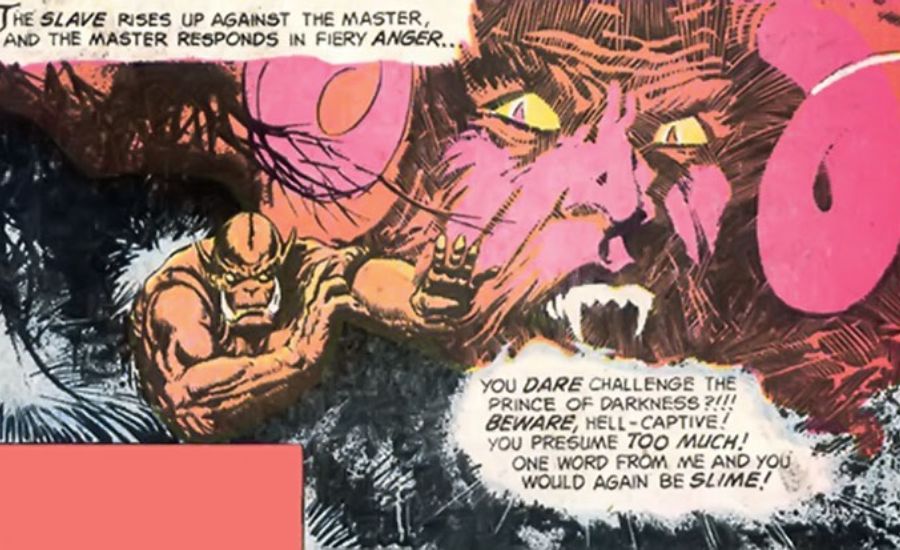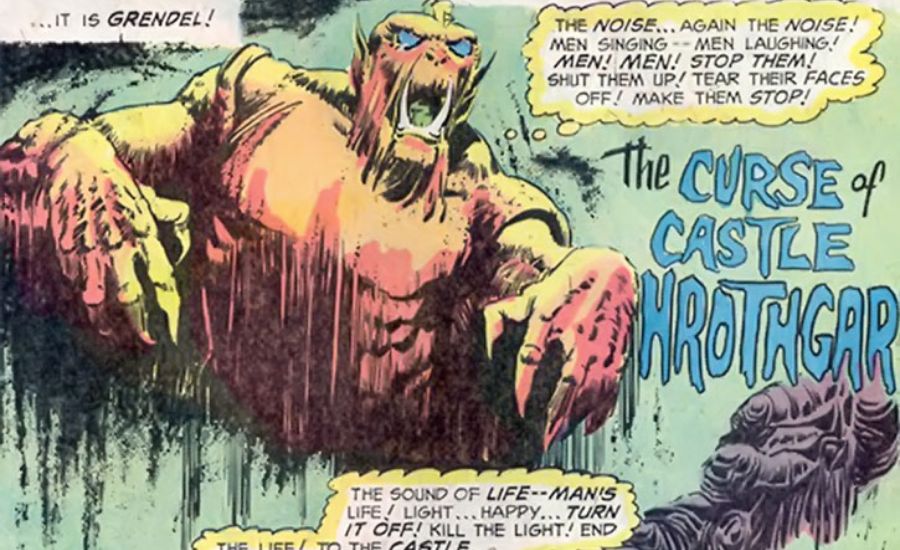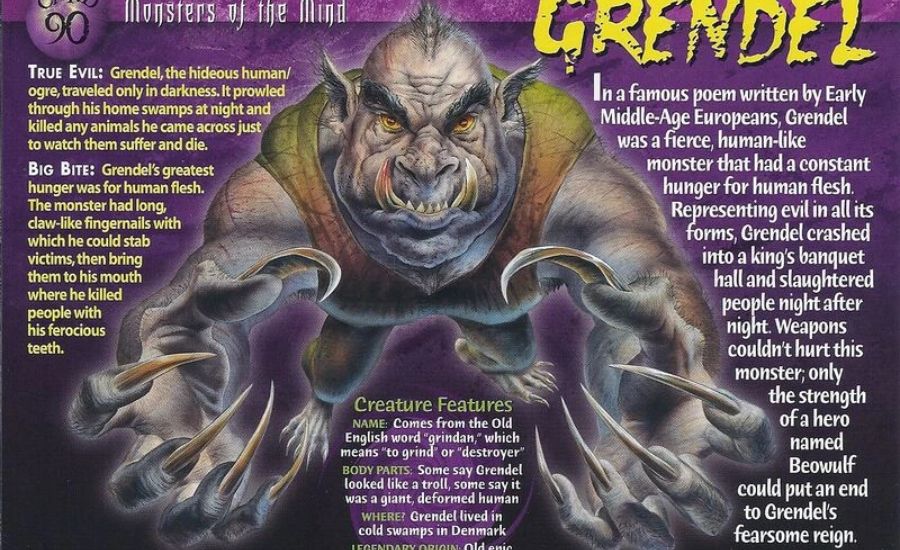Introduction to Quotes of Grendel Being Depicted as a Killer
Few figures in English literature are as eerie as Grendel, the eerie beast from the epic poem Beowulf. Grendel is a vicious predator and a representation of terror, and his destructive deeds have aroused interest and discussion for millennia. His depiction as a ruthless murderer appeals to classic notions of bravery, terror, and the unknown. “Quotes Highlighting Grendel as a Killer” delves into significant Beowulf passages that encapsulate Grendel’s heinous character and examines how these passages influence the poem’s depiction of good versus evil. Readers are urged to face their own anxieties about what awaits them beyond the protection of light and civilization through Grendel’s tale.
The Echoes of Agony: Victims’ Voices

In addition to the physical devastation he creates, Grendel’s reign of terror has a lasting effect on the Danes because of the psychological and emotional harm he inflicts on the survivors. Their sense of security is destroyed by his nocturnal attacks, which also transform happy times into depressing ones. The lament of a survivor who considers the events following Grendel’s attack powerfully captures this metamorphosis:
“Desperation now dwells where joy once thrived, and the hall that reverberated with laughter and singing is filled with the screams of the bereaved.”
This quotation highlights the terrible transition from joy to sorrow. Once a space for celebration and camaraderie, the hall is now a somber reminder of loss. The lack of song and the presence of grieving widows and orphans highlight Grendel’s function as a harbinger of death and misery while also illustrating the severity of the trauma he wreaked. His deeds have an impact that extends beyond the material world, deeply ingrained grief and terror in the Danes’ hearts.
Grendel’s Onslaught: The Midnight Terror

Grendel is introduced in Beowulf as a terrifying force of mayhem who harbors a deep-seated animosity toward human happiness and community. Grendel is a representation of evil and devastation and is said to be descended from a cursed family. More than just acts of physical violence, his constant attacks on Heorot, King Hrothgar’s magnificent mead hall, represent a direct threat to the peace and cohesion of Danish society. The poem uses a harsh, terrifying description to convey the ominous nature of his raids:
“The lone prowler repeatedly caused destruction; he was a tireless monster with a voracious appetite for destruction who haunted the Hall of the Hart.”
This portrayal emphasizes Grendel’s function as a predator whose existence upends social order and tranquility. A place of joy and camaraderie is transformed into a place of terror and grief by his nighttime attacks. Grendel’s deeds represent a more profound upheaval that calls into question the fundamental tenets of interpersonal relationships and safety in public areas. The poem’s examination of the conflict between civilization and the chaotic elements threatening it is reflected in his portrayal as a merciless killer.
The Fear of the Unknown: Grendel as a Symbol of Dread

Beyond his outward deformity, Grendel’s portrayal in Beowulf explores deeper anxieties of darkness, loneliness, and the unknown. In addition to the violence he brings, his presence arouses fear because of what he stands for: an outcast tormented by hopelessness and doomed by circumstances beyond his control. Because the Danes are defenseless against a creature who exists outside the realm of human comprehension, his fear is heightened by their incapacity to foresee or understand his attacks.
This eerie vision is captured in the passage that follows:
“He was a creature of the dark, alienated from happiness and doomed by destiny, bringing destruction to Heorot.”
Grendel is portrayed in this account as a tragic character who is both a predator and a victim of his doomed life. His banishment from joy and light draws attention to a tragic contradiction: he is not evil voluntarily; rather, he is compelled to act violently by an unavoidable fate. Readers are challenged by this multi-layered portrayal to view Grendel not just as a monster but also as a representation of loneliness and hopelessness, a creature whose terrible deeds are the result of his permanent estrangement from the warmth of human connection.
Grendel’s character gains emotional depth from this contradiction. His acts are unquestionably harmful, but they are the result of a life characterized by pain and marginalization. The poem asks readers to consider the conflict between seeing Grendel as a mindless murderer and appreciating the sadness of a creature that is condemned to live in the shadows forever with no chance of salvation.
Facts
- Grendel’s Character: Grendel is depicted as a malevolent creature in the epic poem Beowulf, known for his savage and destructive nature. He is portrayed as a predator who targets the Danes, specifically attacking King Hrothgar’s mead hall, Heorot, and disrupting the peace and happiness of the community.
- Psychological Impact: Grendel’s attacks not only cause physical devastation but also have long-lasting psychological and emotional effects on the Danes. Survivors of his attacks are left with deep grief and fear, which shatters their sense of security.
- Symbolism: Grendel serves as a symbol of dread, darkness, and the unknown. His acts of violence are motivated by his deep-rooted hatred of human joy and his own tragic fate as an outcast, alienated from the warmth of human connection.
- Portrayal of Grendel’s Attacks: Grendel’s attacks are described as relentless and predatory, bringing terror to Heorot. The mead hall, once a place of joy and fellowship, is transformed into a place of sorrow and despair due to his violent actions.
- Grendel’s Origins: According to Beowulf, Grendel is descended from a cursed lineage, which contributes to his violent tendencies and acts of destruction against humanity.
- Contradiction in Grendel’s Character: Grendel is both a killer and a tragic figure. His violence is a result of his alienation from human happiness, and he is portrayed as being doomed by fate, which adds emotional depth to his character.
Summary
Grendel, the monstrous antagonist in the epic poem Beowulf, is a figure whose actions and symbolism provoke fear and reflection on the themes of good versus evil, the unknown, and the effects of isolation. He is a violent predator who terrorizes the Danes, attacking their mead hall, Heorot, and causing emotional and psychological devastation. The poem emphasizes Grendel’s predatory nature through vivid descriptions of his attacks, portraying him as a force of destruction that shatters social cohesion. However, Grendel’s character is also depicted with layers of complexity, showing that his violence is rooted in his tragic alienation from human joy and his cursed fate. This contradiction invites readers to consider the emotional and psychological aspects of his character, as well as the tension between his role as a mindless killer and a creature suffering from loneliness and despair.
FAQs
1. Who is Grendel in Beowulf?
Grendel is a monstrous creature who terrorizes the Danes, particularly attacking King Hrothgar’s mead hall, Heorot. He represents evil and chaos, and his actions create fear and devastation in the community.
2. What is the psychological impact of Grendel’s attacks?
Grendel’s attacks cause not only physical destruction but also emotional harm, leaving survivors with deep grief and fear. His actions shatter the sense of security the Danes once had, turning a place of joy into one of sorrow.
3. What does Grendel symbolize in Beowulf?
Grendel symbolizes fear, darkness, and the unknown. His attacks reflect the conflict between civilization and the chaotic, destructive forces that threaten it. He also represents alienation and loneliness, as he is isolated from human happiness.
4. How are Grendel’s attacks described in the poem?
Grendel’s attacks are described as relentless and predatory. He is depicted as a creature who disrupts peace and causes terror in Heorot, a place once filled with joy and camaraderie.
5. Is Grendel purely evil in Beowulf?
While Grendel’s actions are violent and harmful, he is also portrayed as a tragic figure. His violence stems from his alienation from human society and his cursed fate. This adds complexity to his character, blending evil actions with emotional depth.
6. What role does Grendel’s lineage play in the poem?
Grendel is said to be descended from a cursed family, which contributes to his violent tendencies. His lineage emphasizes his connection to evil and his separation from human beings.
7. How does Beowulf depict the theme of good versus evil through Grendel?
Grendel embodies evil, chaos, and destruction, while Beowulf represents the heroic struggle against such forces. The poem contrasts the moral order and peace of society with the disruptive and terrifying influence of Grendel’s actions.
Read more Information about Animation at Visit SearchKnowledge.org

Leave a Reply